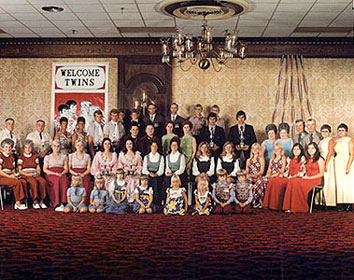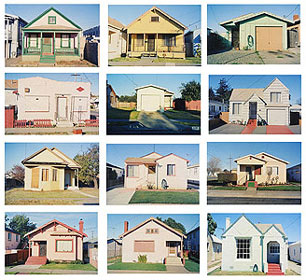Ditto: Multiples from the Collection

About the Exhibition
Ditto: Multiples from the collection
Few concepts fix human attention as strongly as that of the look-alike—from twins to repetitive behavior. We actively seek our reflections in photographs and mirrors, and even, perhaps unconsciously, in our mates. This interest in doubling has been encouraged and reinforced by our perfection of the technologies of reproduction. We have become used to confusing perception with photographs and facsimiles, and live in a world that has recently been transformed, as Susan Sontag has described it, into a “digital hall of mirrors.” Not only can a photographic negative or digital file generate endless amounts of identical images, but the flattening tendency of the lens and the conventions of photographic presentation can also subtly regulate any subject, inviting us to engage in a perhaps too simple game of similarity vs. difference.
This exhibition explores acts and images of doubling by artists who use the camera as a means to explore the effects of, and our fascination with, multiples. Some artists in this exhibition are attracted to the oddity of quasi-identical subjects, such as Diane Arbus and Mary Ellen Mark. Other artists create strict, yet playful, typologies, such as Henry Wessel Thomas Barrow, Neal Slavin, and Meridel Rubenstein. These series illustrate the sometimes competing aims of self-expression and belonging, and hint at the futility of originality as an urge to be different from others. The tension between resemblance and variation over time is explored in the works of William Christenberry and Nicholas Nixon. Each of their images gains its significance from being part of a sequence, and together they remind us of our own process of aging. They also exploit photography’s special ability to compress time and place.
It is perhaps ironic that while we embrace certain technologies of reproduction, others, such as biological cloning and surveillance cameras, incite outrage and fear. Anthony Goicolea’s digital montage of sixteen identical boys stealing potatoes depicts an eerily futuristic world in which clones troop and conspire. Catherine Wagner makes clinical photographs of beakers containing scientific experiments in progress and grids them into a methodical arrangement that mimics the precise routines of scientific investigation. Jocelyn Nevel scans samples of her own hair and outputs the digital information in a series of specimen-like abstractions. Like a photograph, a hank of hair is an intimate trace of the individual, and can serve as a memento mori. It also contains enough DNA to precisely identify us for better or worse—usually worse. By focusing on samples, cloning, and ambiguity, these three artists allude to the unpredictable, vaguely sinister side of scientific experimentation. In the context of this exhibition they also remind us of the dark history of using twins as objects of scientific curiosity.
Repetitive pattern lulls the eye but can also invite it to actively search for variation; reminding us that repetition exists because of, and is reinforced by, difference and discontinuity. By creating series of similar images, all of the artists in this exhibition destabilize our faith in the unique, singular object, and invite us to slow down and locate slight differences in detail. Without fascination and attention to drive it, vision wanders.
This exhibition has been organized in honor of the late David C. Ruttenberg, founding member of the museum’s advisory committee, and his wife Sarajean, who together donated numerous works to the museum’s collection, including the Nathan Lerner, Meridel Rubenstein, and Neal Slavin portfolios, of which selected photographs are currently on view.
-Karen Irvine, Associate Curator
This exhibition and related programs are sponsored in part by the Illinois Arts Council, a state agency; Mayer & Morris Kaplan Family Foundation; the City of Chicago Department of Cultural Affairs/Gallery 37; LG electronics, Chicago and American Airlines, the official airlines of the Museum of Contemporary Photography, and our members.
Image Gallery

